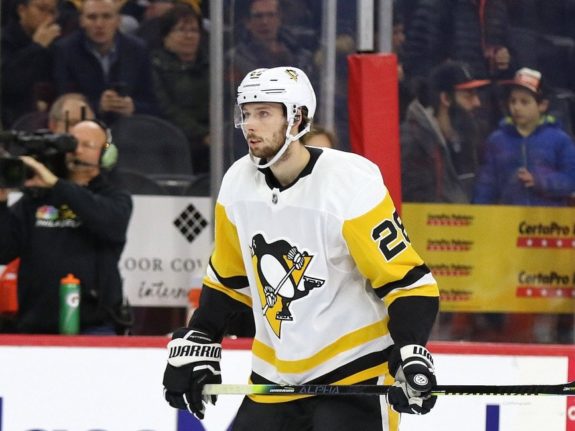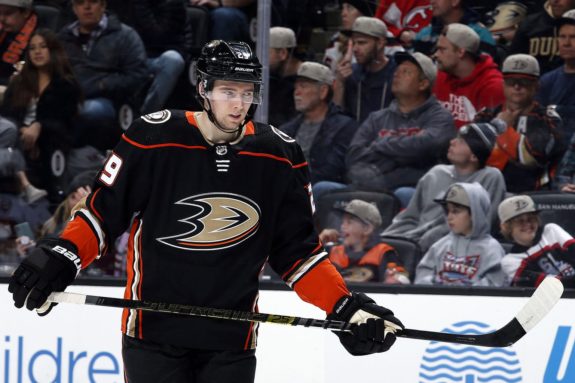On Dec. 3, 2018, the Anaheim Ducks traded Swedish defenseman Marcus Pettersson to the Pittsburgh Penguins for Dutch winger Daniel Sprong. Leading up to Dec. 2018, the Ducks had been icing a defensive core of Jacob Larsson, Josh Manson, Hampus Lindholm, Brandon Montour and Jake Dotchin along with Pettersson. Josh Mahura, Andy Welinski and Andrej Sustr had also filled in at times up to that part of the season. Lindholm had just returned from injury on Nov. 30 and the team was struggling from an offensive standpoint.
The Reaction
The Pettersson trade caught many fans off guard as the lanky Swede had performed well for the Ducks after being called up in February the season before and was even part of the playoff roster. He then made the roster out of training camp and had filled in admirably with several players out due to injuries.
Related: 7 Worst Trades in Boston Bruins History
However, general manager Bob Murray likely saw Pettersson as surplus with how many left-handed defensemen the Ducks had on both their pro roster and in their system; the need for immediate offense took higher priority. Cam Fowler, who was injured at the time of the deal, was also expected to return in mid-January.
Many Penguins and Ducks fans alike saw this as a steal for the west coast hockey club as Sprong was regarded as a highly talented offensive threat who wasn’t being utilized correctly by the Penguins.

The winger had only played in 42 NHL games and 68 AHL games up to that point — he was drafted in 2015 — so playing time had been extremely hard to come by. Sprong was also rumored to have had a falling out with Penguins head coach Mike Sullivan, which may have helped accelerate his departure.
The Result
Sprong was immediately thrust into the lineup, playing alongside Nick Ritchie and Adam Henrique on the second line. The ex-Penguin made an impact right away, scoring in his first game for the Ducks against the Chicago Blackhawks. He showed off his shot that many scouts raved about prior to him being drafted, ripping a shot past Corey Crawford’s shoulder from near the goal line.
Sprong would go on to score 13 more goals for the Ducks that season, sporting a 12.8 shooting percentage. However, the team still finished the season dead last in goals for with 199.
Pettersson was also immediately thrust into the Penguins’ lineup, playing next to veteran Jack Johnson as the third defensive pairing. By the time February rolled around, Pettersson was averaging around 19-20 minutes per night due to Kris Letang and Brian Dumoulin both suffering injuries down the stretch.
Pettersson also played a part in the Penguins’ playoff run, but his team was swept for the second time in as many seasons when Pittsburgh fell to the New York Islanders. Similarly, Anaheim suffered the same fate the season before against San Jose.
The Fallout
While this deal was initially looked at as a steal for the Ducks because of the immediate impact that Sprong had, it’s clear now that the Penguins ended up being the winners of the trade. Pettersson has become an integral part of the Pittsburgh defensive core behind Letang and Dumoulin. Paired with rookie John Marino, Pettersson has already become a 20-minutes-per-game defenseman that can play on the penalty kill, and even on the power play in a pinch.

Typically seen as more of a stay-at-home defenseman, Pettersson started more faceoffs in the offensive zone this season than in the defensive zone (53.1%) due to playing alongside an offensive-minded defenseman in Justin Schultz. When Schultz suffered an injury in December, Marino jumped up to the second pairing with Pettersson and the two became a solid duo for Sullivan. (from ‘Marcus Pettersson and John Marino remain resolute on Penguins blue line,’ Pittsburgh Tribune-Review, 08/02/2020)
Starting in the offensive zone more this season didn’t diminish the 24-year-old’s impact on defense. Pettersson’s defensive point shares (DPS) — an estimate of the number of points contributed by a player due to his defense — during the regular season was above 3.0 for the second consecutive season. His DPS of 3.6 this season was higher than that of any Ducks defensemen, with Cam Fowler’s 2.9 coming closest to matching Pettersson.
Sprong on the other hand was unable to replicate his first season with the Ducks, appearing in just eight NHL games while shuttling back and forth between Anaheim and AHL affiliate San Diego Gulls. He was then traded at the deadline to the Washington Capitals in exchange for defenseman Christian Djoos and hasn’t appeared in an NHL game since then.
Future Impact
The irony of the second Sprong swap is that Murray acquired a defenseman similar to one he had used to acquire Sprong in the first place. While Djoos and Pettersson are fairly close in age, the former has been unable to carve out a full-time role in the NHL to this point after falling out of favor in Washington. Djoos did sign a new one-year deal with Anaheim in May and should be part of their blue line next season.

However, Murray is likely lamenting the fact that he could have had a trio of talented left-handed defensemen in Fowler, Lindholm and Pettersson. Of course, this is all speculation as it is unknown whether Pettersson would have developed at the same rate if he had stayed in Anaheim.
Having recently locked down Pettersson to a five-year deal this past January, the Penguins received tremendous value in dealing a promising prospect who had no concrete spot on the roster for what was originally supposed to be defensive depth. What at first appeared to be a win for Anaheim instead turned into a big win for Pittsburgh.